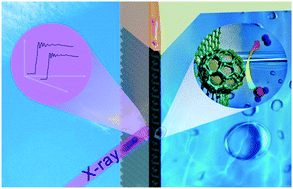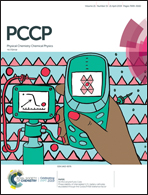Potential-driven surface active structure rearrangement over FeP@NC towards efficient electrocatalytic hydrogen evolution†
Abstract
Understanding the variation of active structure during the hydrogen evolution reaction (HER) process is of great importance for aiding in the design of optimized electrocatalysts. Herein, we present a composite material of FeP nanoparticles coated by N-doped carbon (FeP@NC) as an efficient HER electrocatalyst, synthesized by a pyrolysis and equivalent-volume impregnation method. The as-prepared FeP@NC catalyst can accelerate the HER at a small overpotential of 135 mV with a current density of 10 mA cm−2 in acidic medium and also shows a robust long-term stability with a minor decay of about 10% of the initial current density after 15 h. Using in situ X-ray absorption spectroscopy (XAS), a potential-dependent surface rearrangement of a surface pentahedral Fe structure into an octahedral Fe moiety via surface hydroxylation is clearly observed during the HER process, resulting in a much higher electrocatalytic activity. The theoretical calculations further unveil that the rearrangement of the surface FeP5(OH) octahedral structure could effectively trigger the adjacent P atoms to act as favorable proton acceptor sites towards improving the reaction kinetics of the Volmer step for efficient electrochemical hydrogen evolution.



 Please wait while we load your content...
Please wait while we load your content...